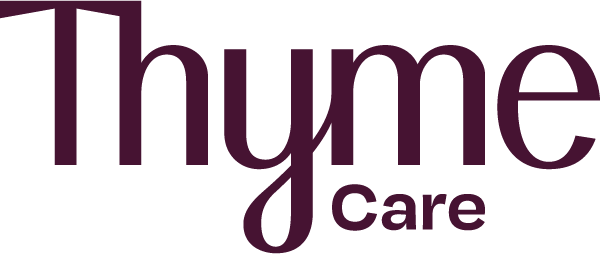Article
The Evolution of Quality Measurement and Efforts to Streamline Reporting
Author(s):
Quality measurement has been around for nearly 2 decades and in that time measures have evolved and also proliferated to the point of placing considerable burden on physicians and health systems. New efforts are being made to streamline current measures, fill in gaps, and harmonize measures across programs.
Quality measurement is a complicated field that is becoming increasingly important as the healthcare industry moves toward value-based care. However, years of proliferation and a lack of centralized guidance has led to an overabundance of measurements and a considerable burden on physicians, practices, and health systems.
Quality measures, which have been around for nearly 2 decades, serve 2 main purposes:
- Internal measurement so organizations can improve on the care they provide
- External reporting to payers or the public
The second purpose becomes increasingly important as quality measures are incorporated into payment programs with the implementation of alternative payment models (APMs), noted John Bernot, MD, vice president of quality measurement initiatives at the National Quality Forum (NQF).
While quality measurement reporting is a key part of APMs, “with the number of measures that are required to be reported and the burden on practices to report them, I feel there are some shortcomings and areas of opportunity for improvement,” said Scott Hines, MD, chief quality officer of Crystal Run Healthcare, and a member of the board of directors for the American Medical Group Association (AMGA).
As a practicing family physician, Bernot has first-hand experience with the impact of measurement proliferation. He explained that there are times when he and his colleagues have 2 ways to report a diabetes measure for 1 patient because there are different programs.
The burden has also been documented in literature. In March 2016, Health Affairs published1 the results of a study of the reporting burden in 4 specialties: cardiology, orthopedics, primary care (family medicine and general internal medicine), and multispecialty practices that included primary care. The research found that the physicians studied spent, on average, 785 hours per year and a total of $15.4 billion a year on quality reporting .
AMGA's member survey found that, on average, about 17 information technology people need to be hired for every 100 physicians, Hines explained. Part of the reason that technical support is needed is to deal with the burden of quality reporting and pulling the data from electronic health records for reporting to payers.
Jerry Penso, MD, MBA, president and CEO of AMGA, added that members have told the organization that quality measurement reporting is time consuming and detracts from overall patient care. They asked AMGA to help streamline the measures and narrow the measures down to the ones that are the most important and relevant.
Recently, AMGA released a streamlined set of 14 quality measures for value-based contracts. As part of its effort, AMGA looked not only at the most relevant measures, but also those that can be risk adjusted when needed, are evidence-based, are claims-based, have demonstrable results, and improve the patient experience.
Hines added that AMGA was interested in outcomes-based measures when it worked on its new set of streamlined measures. Outcomes measures, which show that the physician actually improved care to the patients being served, are part of the evolution of quality measurement that has taken place over the last 15 years, explained Bernot.
“The outcomes measures really represent a maturity in the field of measurement science,” he said. “But there is a lot of complexity with outcomes measures that the field had to evolve toward being able to measure outcomes.”
The field is moving to outcomes measures from process measures—which look to see if an action was done, such as a medication being prescribed. However, the movement is slow. Hines noted that in the Merit-based Incentive Payment System, there are 271 measures and only about 27% are outcomes measures.
“If you look at any given program, or even NQF’s core set of measures, you will see that there is an abundance of process measures compared to outcomes measures,” Bernot admitted.
Even as the industry is moving to streamline measures, there is also an acknowledgement that gaps remain, he added. In addition to the need for more outcomes measures, there are gaps around patient-reported outcomes. NQF is looking to fill those gaps with its prioritization initiative, which the organization undertook to ensure there were more patient- and outcome-focused measures. The initiative is looking to both streamline measures and also fill gaps where measures are needed.
NQF started with a national and international literature search for papers on quality measurement, then a qualitative analysis to identify attributes of measurement NQF thought was important, and finally a quantitative analysis of those attributes. Throughout the process, NQF sought multistakeholder feedback to ensure it was on the right track.
The result was 4 attributes that were deemed important for measures:
- Be outcomes focused
- Have evidence to show there’s improvability
- Be patient and caregiver focused
- Support an integrated view of care or a systemic view of care
The goal is to create a scoring system to rank measures, so the field can look at 4 measures in a particular area but use the scoring rubric to identify the 1 that is better than the others. This will allow the industry to “rally around the correct measures,” Bernot said.
In addition, using this scoring system will help streamline measurement to the priority ones that are most representative of change and can harmonize across programs, he explained.
“All of this becomes possible when we have a really good way of identifying the characteristics of a priority measure, of a really good measure,” Bernot said.
Reference
Casalino LP, Gans D, Weber R, et al. US physician practices spend more than $15.4 billion annually to report quality measures. Health Aff (Millwood). 2016;35(3):401-406. doi: 10.1377/hlthaff.2015.1258.





